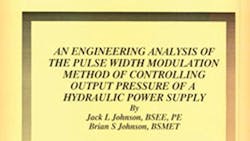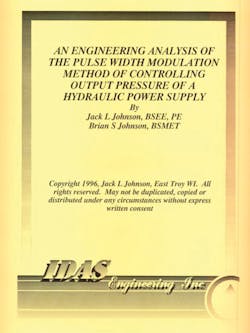Use PWM for pressure compensation from a fixed-displacement pump
Aug. 2, 2012
This is a detailed engineering study of a pressure compensated system that uses a fixed-displacement pump, but no relief valves. It is as efficient as a conventional pressure-compensated pump. You can read about the very complete test results, but more importantly, you can learn all you need to design and build your own low cost, but efficient constant-pressure power units for both servo and conventional applications. Goodbye, variable-displacement pumps.
ISBN 097022591; 128 pages, soft bound, $39.95
Click here for more information or to order from the H&P Bookstore.
About the Author
Sign up for our eNewsletters
Get the latest news and updates

Leaders relevant to this article:

